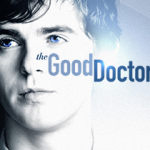New TV Series Highlight Portrayal of Autism
October 02, 2017
By: Organization for Autism Research
Categories: Community News
Autism is a central focus in two new television series, “The Good Doctor” and “Atypical,” this season. Both are sparking conversations on the importance of representation of people on the autism spectrum in the media.
ABC’s “The Good Doctor,” which premiered in late September, centers on Shaun Murphy, a young surgeon who has autism and savant syndrome. Murphy struggles to prove himself in his work as a doctor due to challenges caused by his difficulty with social cues and sensory sensitivities.

“Atypical,” a Netflix series, has already been renewed for a second season since its premier in mid-August. The comedy focuses on high school senior Sam, who is on the autism spectrum, as he navigates relationships and his desire for a girlfriend.

Both portrayals have garnered mixed reviews as members of the autism community debate the impact of each series’ storyline. Some self-advocates have taken issue with the portrayal of characters with autism by individuals who are not on the autism spectrum themselves. Actor Mickey Rowe, who is on the autism spectrum, said in a review of “Atypical” for “Teen Vogue,” “Netflix did not confirm whether there were concerted efforts to include autistic writers, creatives, or actors in any large roles. Onscreen representation isn’t the same as behind-the-scenes representation, especially if that camera-facing depiction is flawed.”
In response to these critiques, series creator Robia Rashid told “USA Today,” “We’re telling a very specific story, Sam’s story, and not trying to speak for every person on the spectrum.”
Others have lauded the shows for their positive aspects. Both characters are young adults on the autism spectrum who are successfully employed and, despite their challenges, lead full and enjoyable lives. “Often, people with autism on screen have been represented as somewhat emotionless or singularly focused on one thing, and that isn’t true. We get to see Shaun in moments of joy, what makes him excited, alongside the very real struggle he’s facing,” explained Freddie Highmore, who plays Murphy on “The Good Doctor,” in the “USA Today” article, which describes current TV series that include a character with autism.
As pop culture tells more stories that include characters on the autism spectrum, viewers have more opportunities to connect with them. In his “Teen Vogue” review, Rowe reflected on the impact of increased autism representation in the media, saying, “The point of storytelling is to connect us with people we otherwise wouldn’t come in contact with, to bring us life experiences we don’t already have. That is why diversity in the arts and media matters. Inclusion in the media matters because it leads to inclusion in life.”